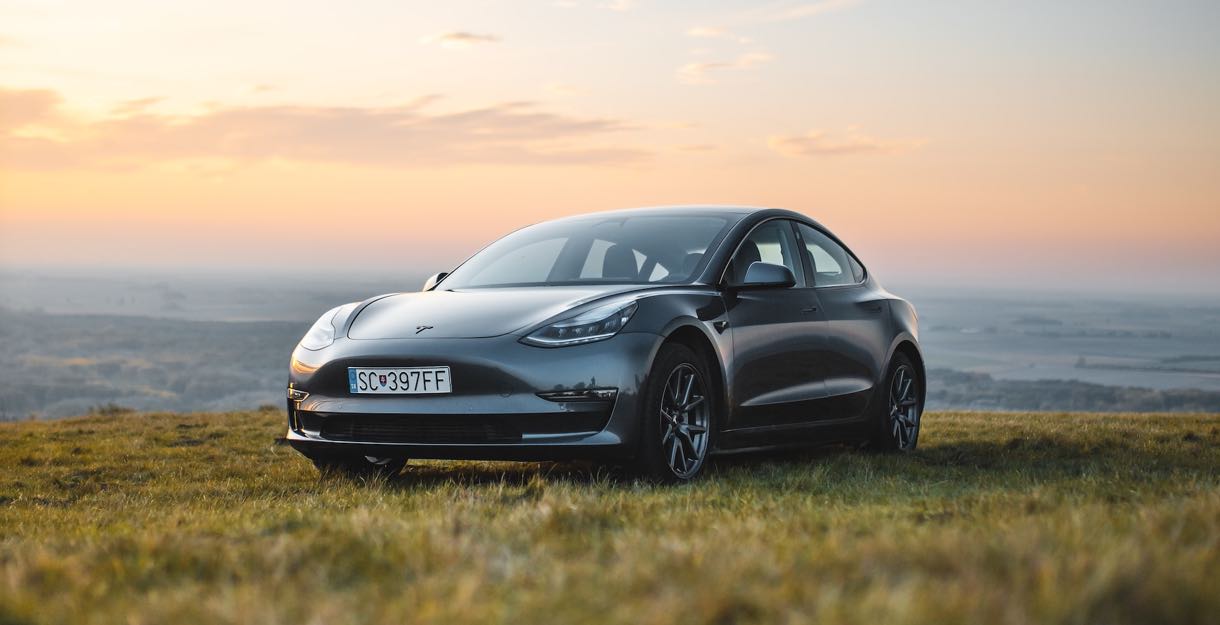Few models in the quickly changing world of electric cars (EVs) generate as much discussion and enthusiasm as the BYD Seal, Polestar 2, and 2024 Tesla Model 3. These EV industry trailblazers are symbols of cutting-edge technology and futuristic design, not just cars. By combining performance, style, and cutting-edge technology in a unique way, each model elevates the industry to new heights. We take a close look at these three industry heavyweights of electric vehicles in our blog article comparison. We pay attention to how they fit into the changing story of sustainable mobility and the electrification of the car industry, in addition to their features and specifications.
We compare more than just the obvious features as we analyze each model’s offers. We explore the subtle aspects that distinguish every car, from the finer points of their technology interfaces to the subtleties of their driving characteristics. These features are essential for buyers, who are more and more seeking for a car that fits with their values and way of life. The EV narrative is told differently by the 2024 Tesla Model 3, with its cult following and inventive streak, the Polestar 2, which focuses on sustainable luxury, and the BYD Seal, a new contender with competitive price. Our research is to offer a thorough perspective, appealing to EV fans as well as prospective purchasers who are considering an electric vehicle for the first time.

In the quickly changing world of electric cars, price is a major deciding factor for buyers. Three significant players’ pricing tactics are examined in this section: BYD Seal, Polestar 2, and Tesla Model 3. We may gain a better understanding of how these companies position themselves in the market and serve various customer categories by investigating their pricing dynamics.
Tesla Model 3 Pricing Dynamics
- The Tesla Model 3 base model, which retails for $61,900, offers a high-tech but rather upscale entry point into the electric car industry. Moving up the price range, the $71,800 mid-spec Long Range model is aimed at customers looking for more features and a larger range.
- The Performance variation is still a compelling option for prospective customers and is anticipated to be launched at a later time. Its pricing has not yet been revealed, but it is expected to target the upper end of the market with promises of improved performance and unique features.
Polestar 2 Offers Premium Pricing
- The Polestar 2’s Standard Range Single Motor model, which costs $67,400, is the base model in the lineup. This entry-level model’s positioning in the premium sector reflects its emphasis on performance and quality.
- The Polestar 2 Long Range model, which can be purchased for $71,400, provides longer range possibilities for long-distance drivers. With improved power and drivability, the $76,400 Dual Motor model is for those looking for ultimate performance. These versions’ higher price points highlight Polestar’s dedication to providing exceptional performance and luxury.
BYD Seal is the Affordable Challenger
- The BYD Seal launches into the market with a basic price of $49,888, which is quite competitive. With this price approach, it challenges the most well-known brands in the electric car industry and becomes an affordable choice for a wider spectrum of consumers.
- In comparison to its competitors, its mid- and top-spec models are also far more reasonably priced. These significantly less expensive BYD Seal models are designed to provide a competitive price while delivering a superior combination of features and performance, making them attractive to people on a tight budget who are searching for high-quality electric cars.
The distinct stance of Tesla, Polestar, and BYD in the electric car industry is reflected in each of these pricing schemes. These tactics, which range from BYD’s aggressive pricing to Tesla’s premium goods, demonstrate the variety of ways to gain market share in this fiercely competitive industry.

When it comes to electric cars, range is a crucial component that frequently influences a buyer’s decision. This section looks into the driving range of three well-known electric vehicles: the BYD Seal, Polestar 2, and 2024 Tesla Model 3. We will examine how these models are unique in that they can go great distances on a single charge, which is important for customers who want an efficient and dependable EV.
Tesla Model 3’s Aerodynamic Advantage
- The excellent range capabilities of the Tesla Model 3 are amazing. With a range of up to 318 miles, the rear wheel drive model is a tribute to its effective aerodynamic design. By providing up to 390 miles on a single charge, the Long Range model goes one step further. These figures demonstrate Tesla’s dedication to increasing driving range, which positions the Model 3 as a serious competitor for EV buyers who place a high value on range.
Polestar 2: Leading the Pack
- Polestar 2, with its marginally longer range, becomes a serious contender. While the Long Range Single Motor variation impresses with a 406 mile range, exceeding the Tesla Model 3’s offering, the standard model boasts a range of 321 miles. Even the 367-mile range Dual Motor variant strikes an excellent mix between economy and power. Due to its range, Polestar 2 is a desirable choice for drivers looking for both performance and long-distance coverage.
BYD Seal: The New Entrant
- The BYD Seal offers comparable range estimates despite being a more recent addition to the market. The range of the entry-level Dynamic model is 285 miles, whilst the mid-range Premium model can go 354 miles. Even the more powerful Performance version of the vehicle manages to maintain a decent 323-mile range. According to these numbers, the BYD Seal is a good option for anyone looking for an electric car that strikes a mix between cost and range economy.
Ultimately, these three cars’ driving ranges demonstrate the progress made in EV technology, with each model meeting a distinct set of requirements and tastes. Customers have a wide range of alternatives to choose from when it comes to long-distance EV travel, including the value-oriented BYD Seal, the aerodynamically efficient Tesla Model 3, and the leading Polestar 2.

Modern technology and opulent equipment are more important than ever in the developing world of electric automobiles. This section explores the distinctive equipment characteristics of the BYD Seal, Polestar 2, and 2024 Tesla Model 3, emphasizing how each model combines luxury and technology in a different way. Every model presents a unique combination of comfort and technology, from cutting-edge infotainment systems to cutting-edge features, creating new standards for the EV industry.
Tesla Model 3’s Tech-Forward Approach
- The Tesla Model 3 sets itself apart with its emphasis on technology; it notably does away with Apple CarPlay while providing a number of exclusive software features. This features a future driving experience with a large and user-friendly touch-screen interface that manages nearly all car operations. Regular over-the-air upgrades are another element of Tesla’s proprietary software that improves functionality and performance over time.
Polestar 2’s Balanced Offering
- Polestar 2 finds a happy medium between modern luxury and age-old elegance. It has stylish and functional 19-inch wheels, an 11.5-inch touchscreen, and a 12.3-inch digital dashboard with smooth Apple CarPlay integration for improved connection. Though sturdy, the rough materials used in the cabin might not be to everyone’s taste for a more opulent, luxury car-like interior.
BYD Seal: Value-Focused Features
- The vehicle-to-load system, which enables the car to give electricity to external devices—a unique feature in this segment—makes the BYD Seal stand out as a value leader. In addition, it has a competitive range of tech features, such as a sizable center touchscreen that works with Android Auto and Apple CarPlay as well as an extensive digital instrument panel. Because of this, the Seal is a desirable choice for anyone looking for cutting-edge technology at a more reasonable price.
Each of these electric cars offers a different viewpoint on how to combine elegance and technology while satisfying a wide variety of customer demands. Whether it’s BYD’s emphasis on pricing, Tesla’s tech-centric strategy, or Polestar’s well-rounded offering, these elements are crucial in determining how consumers perceive and select their vehicles.

For a lot of users, practicality is important when selecting an electric car. This section assesses the usability of the BYD Seal, Polestar 2, and 2024 Tesla Model 3, emphasizing their space and accessibility advantages. We go on boot space, the size of the frunk, and general accessibility to help you understand how these cars fulfill daily requirements.
Model 3: Spacious Yet Inaccessible
- With a roomy 148-gallon boot, the Tesla Model 3 is the best in this class and can accommodate a wide range of storage demands, from everyday groceries to travel bags. It also has a 23-gallon front trunk, which is a special feature of electric cars that provides additional storage capacity. Nevertheless, despite its size, some users have pointed out that the boot’s shape and design may make it more difficult to store larger objects, making it less accessible overall.
Polestar 2: Accessible but Compact
- The Polestar 2 has a 106-gallon boot capacity. Despite being smaller than the Model 3, the Polestar 2’s baggage room is more ergonomically designed, particularly with its rear liftback door that makes loading and unloading objects easier. In addition, the car has a 10-gallon frunk that offers more storage capacity. Its intelligent design and small size make it a desirable choice for people who value accessibility.
BYD Seal: The Middle Ground
- The 118-gallon boot capacity of the BYD Seal strikes a balance between its rivals. This capacity is in the middle, not as large as the Model 3, but yet providing enough room for daily use. In addition, it has a 13-gallon frunk—bigger than the Polestar 2’s but not as big as the Model 3’s. The BYD Seal is a flexible option for anyone looking for both room and accessibility because of this combination.
To sum up, every one of these electric cars offers advantages and disadvantages in terms of everyday use. The BYD Seal presents a well-rounded strategy, the Tesla Model 3 provides the largest room, and the Polestar 2 delivers the finest accessibility. Potential customers may make an informed choice based on their unique pragmatic demands by being aware of these subtleties.

Performance is an important factor to take into account when thinking about an electric vehicle (EV) that goes beyond just statistics. It all comes down to how well power, efficiency, and driving feel work together. We’ll examine how the 2024 Tesla Model 3, Polestar 2, and BYD Seal strike a balance between these factors in this part, including details on their power output, acceleration, and general performance traits. Knowing these factors can help customers make an informed decision that fits their needs and driving habits.
Tesla Model 3: Awaiting Performance Data
- The Tesla Model 3, whose versions offer quick 0-100 km/h acceleration speeds, has traditionally established standards in the EV performance industry. Customers are eagerly anticipating the most recent performance statistics as the changes keep coming in. Tesla’s performance philosophy emphasizes economy and technological integration above pure speed. The high bar that Tesla has set in the past is reflected in the expectation for revised numbers, indicating that the forthcoming Model 3 will keep pushing the envelope on EV performance.
Polestar 2: Power Leader
- The Polestar 2 makes a strong power-leadership statement with a rear-drive powertrain that produces 200kW and 490Nm of torque. This significant power output raises the standard for the electric car class by enabling quick acceleration and responsive driving. For those who want both elegance and performance, the Polestar 2 is an attractive option because of its power and elegant Scandinavian design. Its focus on clean, efficient power delivery is evidence of the brand’s unique engineering and dedication to driving perfection.
BYD Seal: Economical Performance
- The BYD Seal, which has a rear motor with 150kW and 310Nm, stands out as an example of affordable performance. Even while it might not have the same raw power as its rivals, the Seal concentrates on offering a well-rounded, effective driving experience at a more affordable price. Because of this strategy, it is a desirable choice for customers who are either new to the EV industry or who value economy above thrilling high-speed experiences. The performance of the Seal serves as a reminder that price and efficiency don’t have to come at the expense of driving enjoyment.
Performance in the context of electric cars is a dynamic story that revolves on efficiency, technology, and user experience. Each of the Tesla Model 3, Polestar 2, and BYD Seal offers a different perspective on what it means to drive an electric vehicle as they compete for a place in consumers’ garages. These cars show that there is an electric car that fits different lives and tastes, from the thrilling acceleration of the Tesla and Polestar to the balanced efficiency of the BYD. Customers should think about what performance means to them and select a car that reflects those ideals.

The user experience in the quickly changing world of electric vehicles is greatly influenced by ownership benefits and charging infrastructure. This section explores the key points of comparison between the BYD Seal, Polestar 2, and 2024 Tesla Model 3. We’ll go over their charging capacities and special ownership benefits, which are essential for any potential purchaser thinking about purchasing an electric car.
Model 3’s Supercharger Network Advantage
- Tesla’s Model 3 maintains its advantage in terms of charging ease by utilizing the brand’s vast network of Superchargers. With the vehicle’s remarkable 250kW peak charging capability, drivers can recharge their vehicles up to 80% in only 30 minutes. Because of its quick charging speed and the fact that Superchargers are widely accessible, Model 3 drivers can travel large distances with little downtime.
Polestar 2’s Competitive Charging
- With its strong mechanism, Polestar 2 ups the ante in the charging department. The standard battery of the car can be charged quickly thanks to its DC peak charging rate of 135kW; the bigger Long Range battery may be charged in as little as 28 minutes. The Polestar 2 is a strong contender in the EV market despite having a charging capacity that is somewhat slower than that of the Tesla Model 3.
BYD Seal’s Slower but Innovative
- An exciting blend of cutting-edge functions and charging capabilities is introduced with the BYD Seal. The Premium and Performance models can charge at a greater rate of 150kW on DC than the standard model, which can only charge at a maximum of 110kW. Despite having a little slower charging speed than its competitors, the Seal makes up for it with a special vehicle-to-load method. This function makes it possible for the vehicle to power external gadgets, which is helpful in a variety of outdoor and emergency situations.
It is evident from examining these factors that every car has a unique combination of advantages when it comes to ownership and charging. Every car caters to a different component of the EV ownership experience; from Polestar’s affordable charging prices and BYD’s novel features to Tesla’s quick charging and large network. For purchasers who value assistance and convenience above all else when selecting an electric vehicle, these features are essential.

Each of the Tesla Model 3, Polestar 2, and BYD Seal has its own advantages and disadvantages for 2024. While BYD provides unparalleled value and Tesla maintains a strong charging network and excellent tech, Polestar excels in performance. The ultimate decision will be based on personal priorities and preferences.
The Reasons for Selecting Ship A Car, Inc. to Ship an EV Being the best electric vehicle shipping company, Ship A Car, Inc. stands out. Their experienced and committed coordinators offer a smooth and dependable transportation experience. Get in touch with them at (866) 821-4555 for unmatched assistance. Any electric car can be shipped by SAC, regardless of where it is picked up or delivered in the US.
Frequently Asked Questions
Q: Which electric vehicle provides the best bang for the money spent?
A: Because of its affordable prices and extensive set of features, the BYD Seal stands out as the most advantageous option.
Q: What is the difference between these automobiles in terms of the charging infrastructure?
A: Tesla Model 3 has an edge over its competitors due to its massive Supercharger network, but Polestar 2 and BYD Seal both have charging capabilities that are comparable to those of Tesla Model 3.
Q: What distinguishes Ship A Car, Inc. from other companies that provide services for transporting electric cars?
A: It is well recognized that Ship A Car, Inc. provides devoted service, coordinators that are experienced, and solutions for transporting EVs that are dependable and effective.




